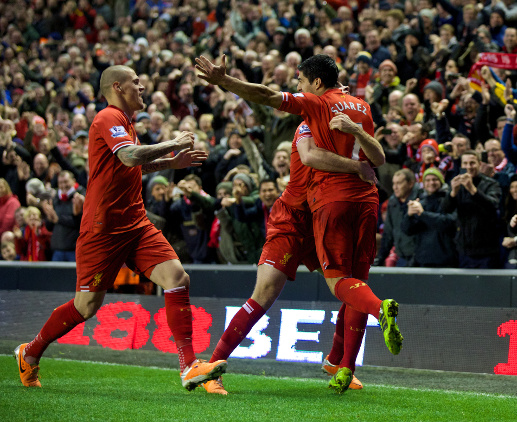- The Official Liverpool Football Club Facebook page
- The Official Liverpool Football Club Twitter page
- The Official Liverpool Football Club Youtube page
- The Official Liverpool Football Club Pinterest page
- The Official Liverpool Football Club Fancred page
- The Official Liverpool Football Club Google+ page
- The Official Liverpool Football Club Instagram page
-
Global LFC

Global LFC
Countries & Languages- ArabicThe Official Liverpool Football Club Arabic Twitter account The Official Liverpool Football Club Arabic Facebook account
- AustraliaThe Official Liverpool Football Club Twitter account for Australia and New Zealand The Official Liverpool Football Club Australian Facebook account
- BangladeshThe Official Liverpool Football Club Twitter account for Bangladesh The Official Liverpool Football Club Bangladesh Facebook account
- BrazilThe Official Liverpool Football Club Twitter account for Brazil The Official Liverpool Football Club Brazilian Facebook account The Official Liverpool Football Club Instagram account for Brazil
- ChinaThe Official Liverpool Football Club Sina Weibo page The Official Liverpool Football Club Tencent Weibo page The Official Liverpool Football Club Weixin page
- EnglishThe Official Liverpool Football Club English web site The Official Liverpool Football Club English Twitter account The Official Liverpool Football Club English Facebook account
- FranceThe Official Liverpool Football Club account for France
- FinlandThe Official Liverpool Football Club account for Finland
- GreeceThe Official Liverpool Football Club account for Greece
- IndiaThe Official Liverpool Football Club Twitter account for India The Official Liverpool Football Club Facebook account for India
- Indonesia The Official Liverpool Football Club Twitter account for Indonesia The Official Liverpool Football Club Indonesian Facebook account
- ItalyThe Official Liverpool Football Club Twitter account for Italy
- JapanThe Official Liverpool Football Club Japanese Facebook account
- Malaysia The Official Liverpool Football Club Twitter account for Malaysia The Official Liverpool Football Club Facebook account for Malaysia
- New ZealandThe Official Liverpool Football Club Twitter account for Australia and New Zealand
- NorwayThe Official Liverpool Football Club account for Norway
- PakistanThe Official Liverpool Football Club Twitter account for Pakistan
- PolandThe Official Liverpool Football Club Twitter account for Poland
- Portuguese The Official Liverpool Football Club Portuguese Twitter account The Official Liverpool Football Club Portuguese Facebook account
- Russian The Official Liverpool Football Club Russian VK account
- Spanish The Official Liverpool Football Club Spanish Twitter account The Official Liverpool Football Club Facebook account for Spain
- South AfricaThe Official Liverpool Football Club Twitter account for South Africa
- South Korea The Official Liverpool Football Club Twitter account for South Korea The Official Liverpool Football Club Facebook account for South Korea
- Thailand The Official Liverpool Football Club Twitter account for Thailand The Official Liverpool Football Club Facebook account for Thailand The Official Liverpool Football Club Instagram account for Thailand
- TurkeyThe Official Liverpool Football Club Twitter account for Turkey
- USAThe Official Liverpool Football Club Twitter account for the USA
- Vietnam The Official Liverpool Football Club Facebook account for Vietnam
Websites- Liverpoolfc.comThe Official Liverpool Football Club English web site The Official Liverpool Football Club English Store
- LFC XtraLFC Xtra
- China The Official Liverpool Football Club Chinese web site The Official Liverpool Football Club Chinese Store
- IndonesiaThe Official Liverpool Football Club Indonesian web site The Official Liverpool Football Club Indonesian Store
- ThailandThe Official Liverpool Football Club Thai web site
- LFC Tour 2015The Official Liverpool Football Club LFC Tour 2015 web site
- LFC FoundationThe Official Liverpool Football Club LFC Foundation web site
- ArabicThe Official Liverpool Football Club LFC Arabic web site























